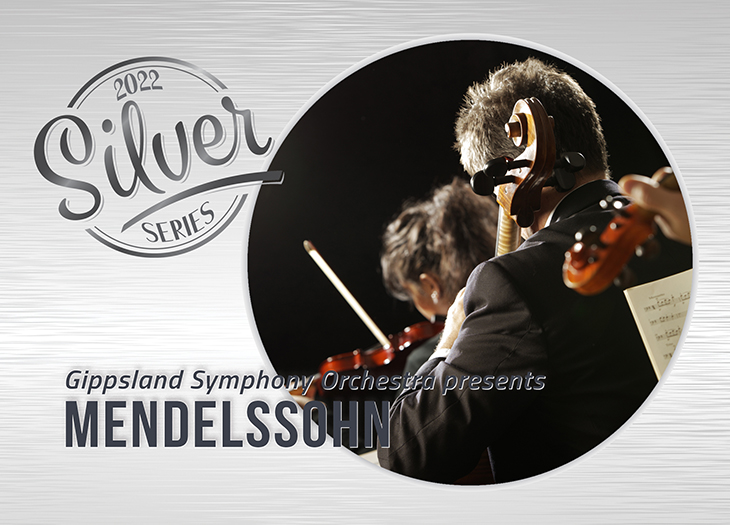Gippsland Symphony Orchestra - Mendelssohn

Felix Mendelssohn rightly takes his place in the pantheon of Classical Music greats; a virtuosic instrumentalist and composer is clearly one of the most important German composers of all time. His music faultlessly combines the expressive elements of Romantic music with the clarity of Classical music. He was responsible for the re-emergence of interest in the music of J.S. Bach, a legacy beyond comprehension to musicians around the world. Imagine a world without Bach?
Mendelssohn was a prolific composer and during his short life he
composed significant works in all styles, particularly his Symphonies
and Overtures. He wrote two Oratorios Elijah and St Paul and many songs
and a collection of String Symphonies. His compositions are perfectly
reflecting the artistic attitude of his time, clarity, balance, and
discipline.
Overture to A Midsummer Night’s Dream, Opus 21
Mendelssohn
adored the writing of Shakespeare and the Overture to A Midsummer
Night’s Dream was written when he was 17 years old. He orchestrated and
this demonstrated the precocious talent he had. The overture perfectly
captures the works of faires, Oberon, Tatiana, and the myriad of
characters that Shakespeare created.
Symphony No. 4 in A Major, op. 90 (“Italian”)
He toured
extensively and on a visit to Italy he went to Rome, Naples, Venice and
Florence and this trip had an impression on him. He spoke with great
enthusiasm about his trip and took inspiration and stimulation from his
time in Italy. In a letter he wrote to his sister he spoke effusively of
the Symphony No 4 as the “happiest piece I have ever written”. He dubbed
this symphony the Italian and on its premiere performance received great
acclaim and is considered by many as being the ’perfect’ symphony.
Ironically, it was in 1851 that it was published for the first time,
some four years after his death.
String Symphonies
Mendelssohn wrote thirteen string symphonies
between 1821 and 1823 (age 12 to 14) The symphonies are mirrors to the
masterworks of Haydn, J.C. Bach, C.P.E Bach and Mozart. These symphonies
are mature beyond the young years of the composer and point to the
brilliance of his later symphonic works, in these work he experimented
with three, four and five movement forms and No 10 and 13 are in one
continuous movement. A form he adopted for the famous Violin Concerto.




